Traditional water features only scratch the surface of what water can do in the landscape. It is the elixir of life for plants, and it sculpts rock and soil into the wondrous patterns that inspire our designs. It also sculpts our moods and soothes our emotions.
All water features are dynamic, but if you tap into their artistic potential — and if water isn’t too scarce where you live — there is a wide world to explore. The imaginative examples below offer a few points of departure for an expanded view of water features, whether you’re working with a pond, swimming pool or fountain.
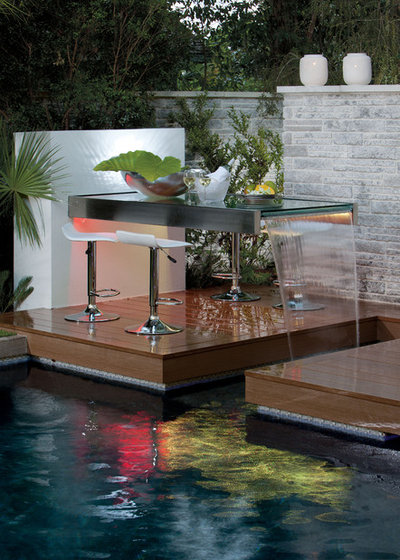
Phil Kean Designs
Container ConceptsAnything that holds water can be a fountain. And things that don’t traditionally hold water can be adapted for the purpose, such as this poolside table. The curtain of water flowing from it is as much a part of the architecture here as the stone and woodwork. Unlike the other more static elements in the scene, however, it is alive and engages the senses on multiple levels.
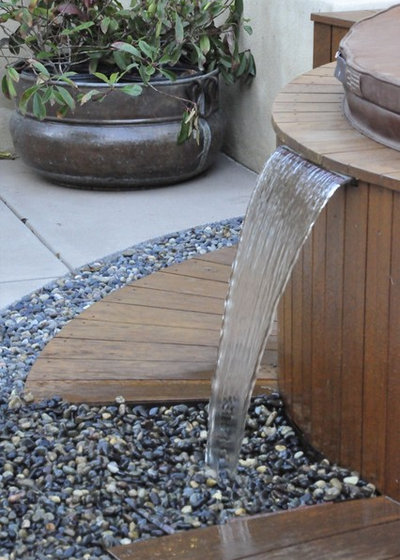
Jeffrey Gordon Smith Landscape Architecture
Water can flow out of unconventional places, and it can also flow into seemingly solid objects. The pondless, or disappearing, waterfall is increasingly common in contemporary landscape design, but we’ve only begun to explore the possibilities.
Above is a simple example, where the water flows into a stone-filled basin housing a hidden pump that recirculates the water back to its source. The counterintuitive image of water flowing into a solid object is always visually arresting.
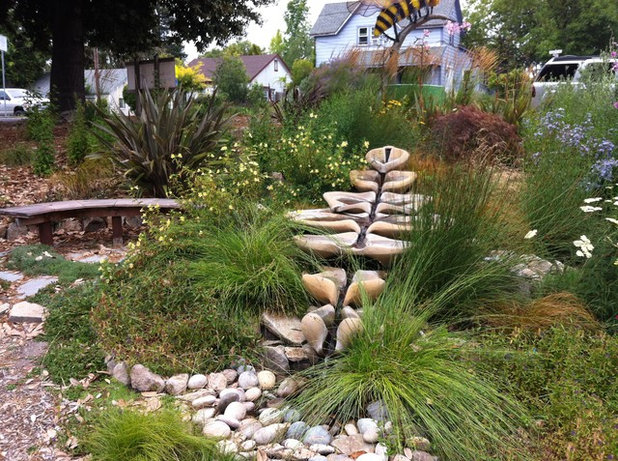
Bohemian Stoneworks
Here is an unusual fountain that is as soft and sensuous as the previous example is austere. This type of fountain is known as a Flowform. The design of the basin is mathematically calibrated to create the maximum oxygenation of the water as it flows through. The water curls over on itself, mixing with air as it swishes back and forth through each basin. In fact, the water flows in a figure-eight current through each one, making a mesmerizing sound that evokes the ebb and flow of crashing waves and meandering rivers.
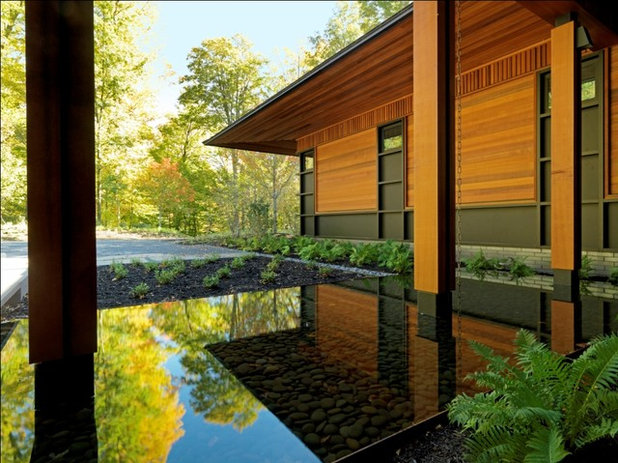
Birdseye Design
An unconventional take on a traditional reflecting pool, this Cor-Ten steel water feature also seeps into a hidden basin that lies just beyond its edges. Similar to the idea of an infinity pool, the edgeless design allows the water feature to blend with its surroundings. The reflective surface of the still water counters the imposing quality of the structural posts that descend into it, creating an otherworldly illusion of a floating structure.
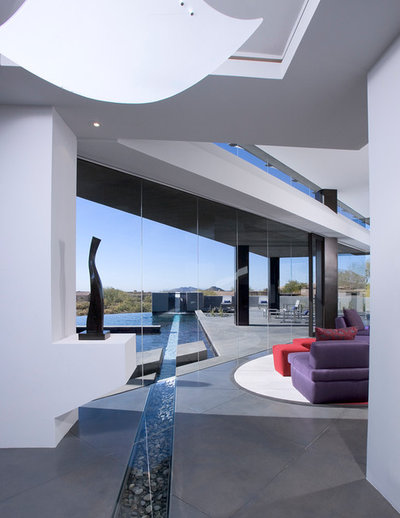
Urban Design Associates
Lines in the LandscapeWe often think of water as something soft to fill a predefined form, but it can also create sharply defined lines of its own. This is accomplished by using linear containers and diminishing the edge of the container so the emphasis is on the water itself. The creative possibilities for using water to “draw” shapes in the landscape are endless. Lines are normally formed with hard materials like brick or wood, but this example shows how water can be substituted for the lines that knit a landscape together with breathtaking results.
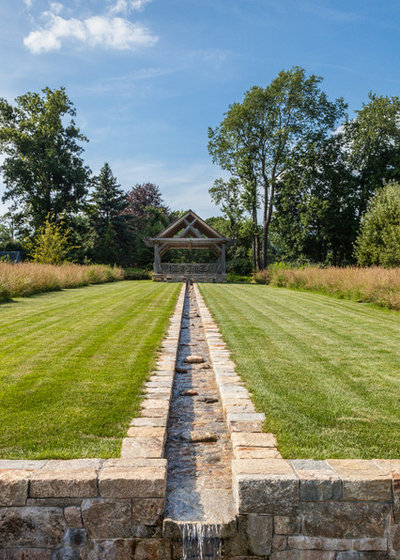
Devore Associates
Water has a long history of being used within linear water features, though often for practical purposes rather than for aesthetics. Runnels — the technical term for narrow channels used to move water from one place to another — were once used for irrigation purposes and as rudimentary drainage systems, but they make intriguing landscape elements on their own. Like miniature aqueducts or canals, runnels bring to mind a time when beautiful civic and agricultural waterworks were part of the fabric of every landscape.
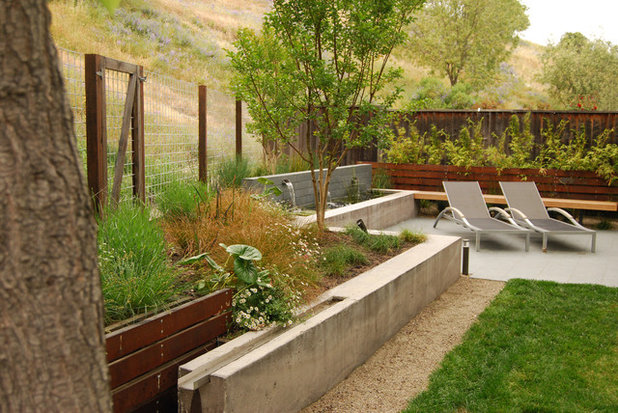
Envision Landscape Studio
Linear water features fit neatly into many other landscape elements, such as the low retaining wall here. The neat thing about water is that it moves effortlessly from one vessel to another. It can go from a fountain to a runnel to a pool and connect disparate elements of the landscape along the way. Conveniently, water can be made to disappear into a pipe when needed, whether for practical purposes or for a dramatic effect.
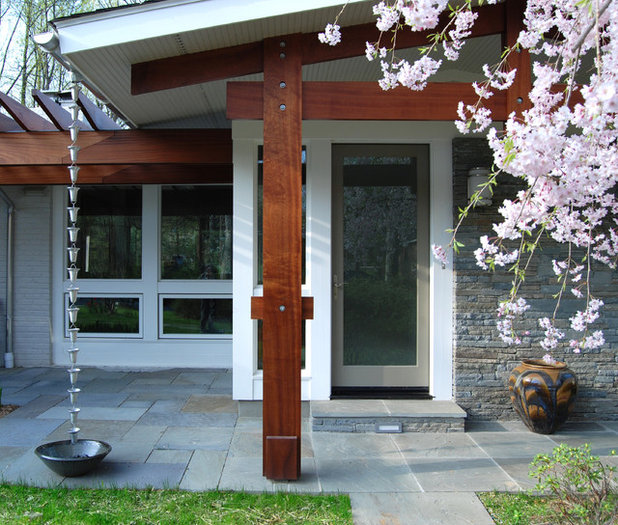
CARIB DANIEL MARTIN architecture and design llc
The Spirit of WaterSometimes the best way to work with water is to imply its presence, even when it’s not actually there. Rain chains are a great example. In the image above, the visual tension between the gutter and the bowl below is cemented by the ornate rain chain.
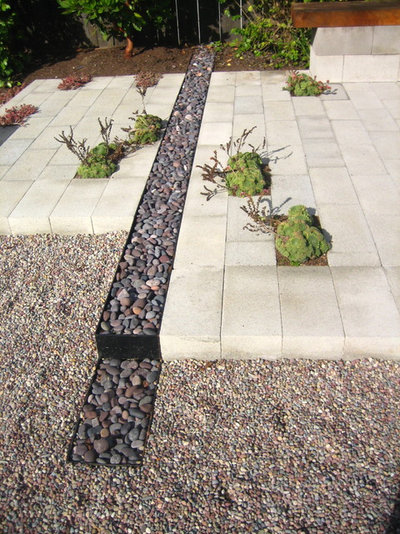
Terra Ferma Landscapes
Dry streambeds are a tried and true way to evoke the presence of water without actually using water, but the conventional approach of building them with river rocks to look as if a natural streambed might have actually run through the yard is a bit overdone. Dry streambeds have a practical purpose as surface drainage features, but there are many ways to make them a little more aesthetically abstract, as with the dry, rock-filled runnel leading to a pea gravel basin pictured here.
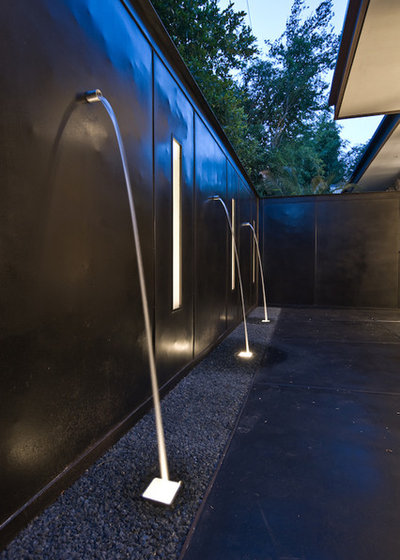
D-CRAIN Design and Construction
Water as SculptureWater moving through the air can take your breath away. And how it moves through the air is an open arena of creativity. It can move as a silky curtain, a diffuse spray, a thick and thundering flow, or a pencil-thin line. The arc of its trajectory through the air is part of the artistry, as is the way it interacts with light — whether glistening in the sun or sleekly illuminated with an LED system. This disappearing fountain flows right onto a cool-toned light fixture that highlights the form of the water in a way that feels crisp and clear.
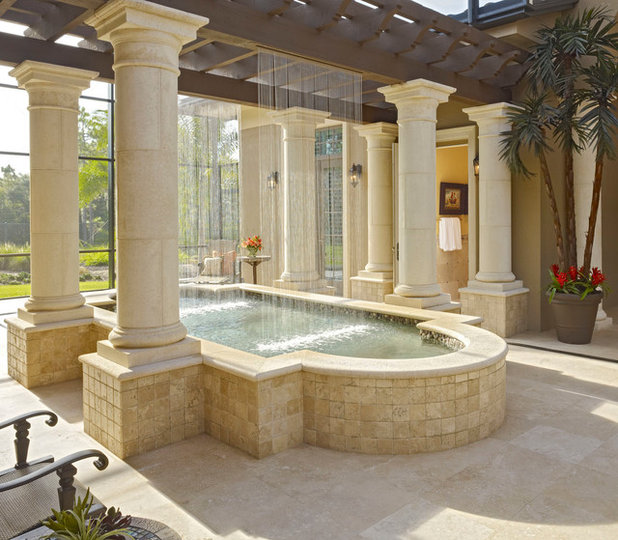
Flowing water sets a distinct tone as it permeates a space with its melodic sounds. But if you think of it as a sculptural medium, you can use it to create an outdoor room. Water is no longer just something to fill a pond or fountain with; it is a living, moving vehicle to bring the landscape to life. About the only thing it can’t be made to do is run uphill.





